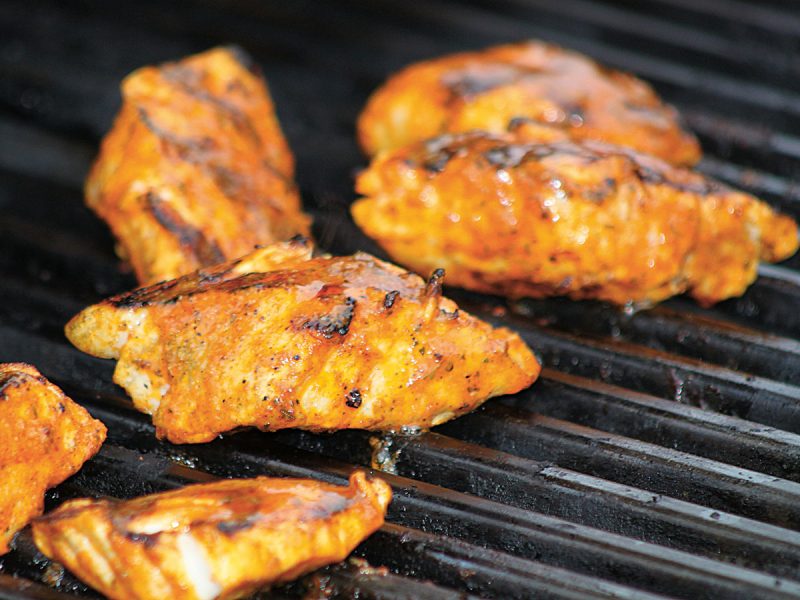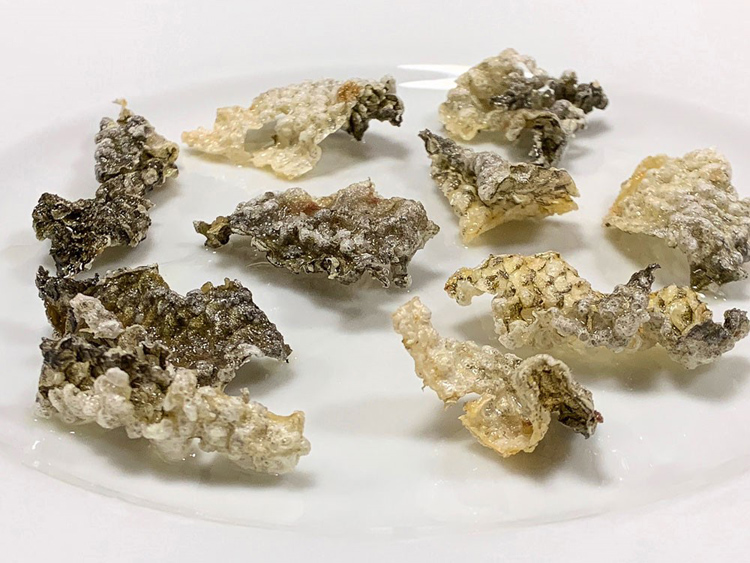Head
The best flavor is in the head. The meat around it is fattier and has a finer, firmer flake compared to the rest of the fish. It’s like the dark meat on a chicken – juicier and more tender.

The Captain's Cookbook Recipe: Blacked/Grilled Striped Bass
Sirloin
This is the choicest cut from the fillet. It is slightly fattier, and the extra thickness helps prevent overcooking. This is my prime pick for a grilled preparation.
Cheeks
There isn’t a lot of meat here. It is tedious to fillet it out and remove the skin, but what you are left with is what I consider the best cut on any fish. You get a nugget of buttery, fatty goodness that is tender and melts in your mouth, similar to a good sea scallop.
Collars
These bony triangles contain excellent fatty, tender meat. They are perfect for grilling, though preparing them takes some work, and you must scale the throat section before filleting. Regardless, the bone makes an easy handle for you to hold as you nibble away
Fins
The fins and tail have a good amount of collagen, which makes them great additions to fish stock. Remove them with scissors and simmer, along with the bones, for about 45 minutes. Use the stock for braised preparations or in a soup or chowder.
“Chuck”
These portions of the fillet are not that thick, and they tend to be very lean, which means they dry out if overcooked. I prefer to use them in recipes that call for braising in liquid. For the best end result, make sure to carefully cut this stuff away from the fillets before cooking.

Striper Provencal
Blood Line
The dark red meat that runs along the spine is the only part of a striper I avoid eating. It has a strong, fishy flavor that I am not a fan of, so as a special treat I feed it to my dogs, who seem to love it. Don’t overdo it though, as there is the possibility of mercury poisoning in dogs from consuming large amounts of fatty, long-lived fish.
Belly Meat
This is another prized cut that is often overlooked. It takes some work, but you will find a fair amount of meat here. Carve it out and take off the skin, then remove the silver skin on the inside. This cut is great for a chowder.
Skin
Fish skins contain a good amount of fat. They are a good addition to a stock, or if you are really feeling adventurous, you can deep-fry them to make fish-skin chicharrones, the potato chips of the sea.

Fish Skin Chicharrones
What's Left
Anything that is left makes great compost for your garden. The tomatoes I plant above buried fish heads always seem to grow the largest. My vegetable garden is also a massive fish cemetery, though in the summer and early fall when my garden is fully planted, I dispose of any carcasses back into the sea instead of sending them to the landfill. The crabs have to eat too.